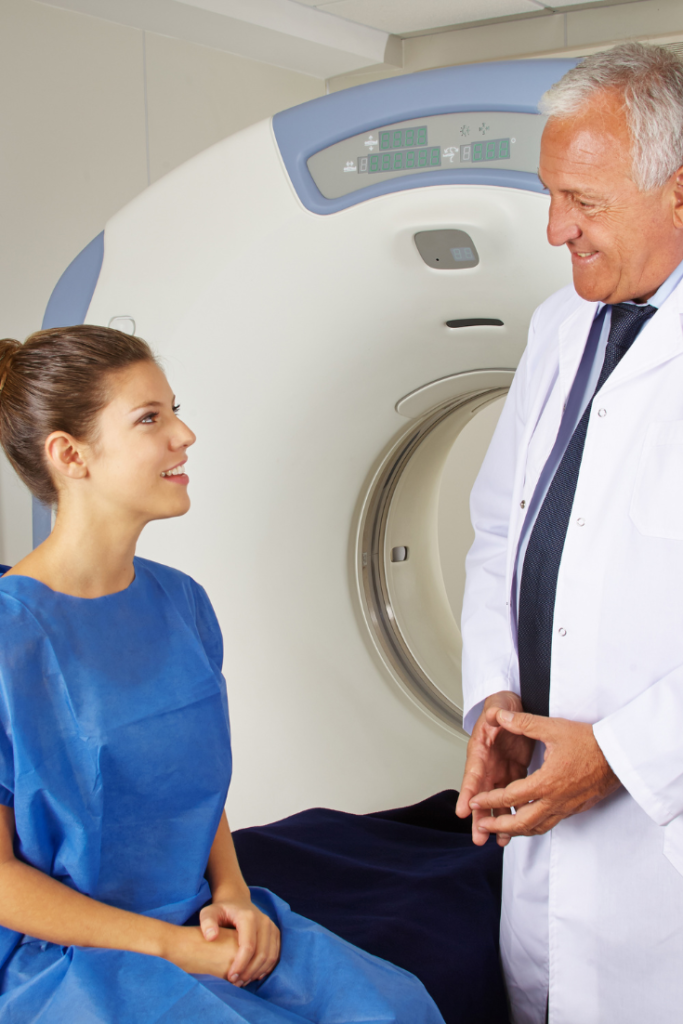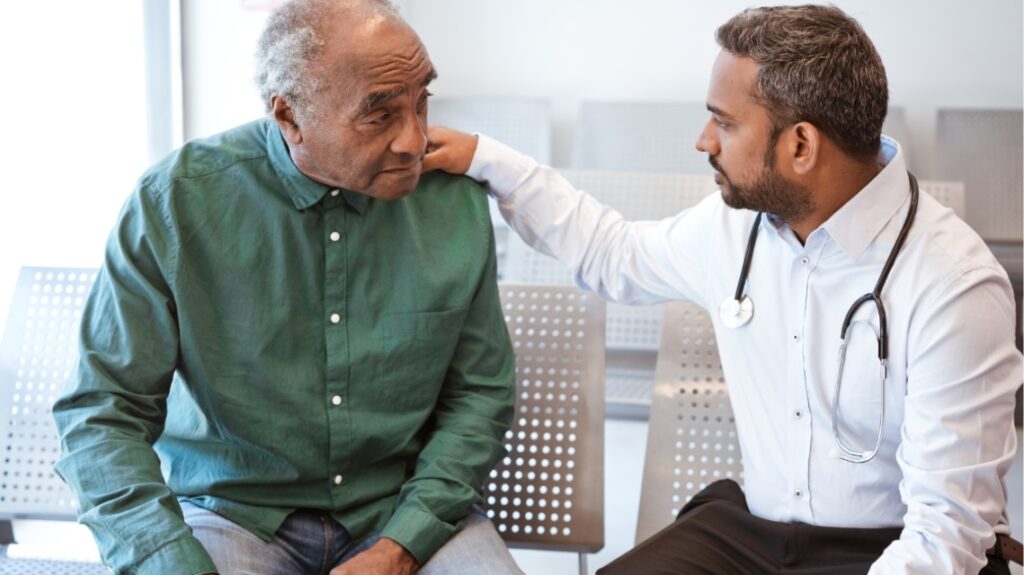Improving Patient-Doctor Communication for Better Healthcare Outcomes: Insights from Dr. Philippe Smith

The cornerstone of successful patient outcomes lies in the quality of communication between doctors and their patients. Effective patient-doctor communication plays a pivotal role in fostering a therapeutic alliance. Establishing trust and rapport is not merely a byproduct of good communication; it is its essence. Dr. Philippe Smith, a respected physician, has witnessed the trust that is built when patients feel understood and respected.
Such trust enables a more open exchange of information and concerns. This trust is crucial, as it directly influences patients’ willingness to disclose symptoms, adhere to treatment plans, and engage actively in their healthcare journey. Dr. Smith provides his experienced insights on improving communication between doctors and patients to improve healthcare outcomes.
An Overview of Important Communication in Healthcare Settings
Enhancing treatment adherence is a critical outcome of effective communication. Clear, compassionate, and tailored communication helps in demystifying medical jargon, thereby making treatment plans more comprehensible and achievable for patients. This clarity not only empowers patients but also encourages adherence to prescribed therapies, a key factor in successful treatment outcomes.
The overall quality of healthcare outcomes is significantly enhanced through effective patient-doctor communication. It leads to more accurate diagnoses, more effective treatments, and greater patient satisfaction, culminating in a holistic improvement in healthcare delivery. At its core, the art of medicine is as much about effective communication as it is about clinical expertise.
Barriers to Effective Communication
In the pursuit of optimal healthcare outcomes, effective communication between patients and doctors is essential. This communication is often hindered by various barriers, chief among them being language and cultural differences as well as time constraints in medical practice.
Language and cultural barriers significantly impact patient comprehension. When a patient and doctor do not speak the same language or when cultural differences obscure the meaning of medical advice, the risk of misinterpretation increases. This leads to confusion and misdiagnosis, inappropriate treatment, and reduced patient compliance. A doctor’s use of medical jargon or culturally specific analogies may be entirely lost on a patient from a different background, leading to misunderstandings about the severity of their condition or the necessity of treatment.
To bridge this gap, healthcare providers can employ a variety of strategies. The use of professional medical interpreters is paramount, as they can facilitate accurate and effective communication. Additionally, translating important medical documents and signage in healthcare facilities into multiple languages can significantly aid comprehension. Healthcare providers should also be trained in cultural competence to understand and respect cultural differences in healthcare perceptions and practices. This training can help tailor communication to be culturally sensitive, ensuring that patients feel respected and understood.
Time Constraints in Medical Practice
Time constraints in medical practice pose another significant barrier to effective communication.
“The pressure of seeing a high volume of patients often leads to shortened consultations, during which complex medical information must be conveyed quickly,” says Dr. Philippe Smith. “This rushed environment can inhibit thorough, two-way communication, leading to patients feeling unheard and leaving consultations with unanswered questions or a poor understanding of their health conditions and treatment plans.”
Addressing this challenge requires a strategic approach to time management in patient consultations. One effective method is the use of open-ended questions at the beginning of the consultation, which allows patients to express their concerns quickly and gives doctors a clear direction for the conversation. This can be more time-efficient than a linear, question-and-answer format. Additionally, implementing structured communication templates can help in covering all necessary points succinctly.
Leveraging technology can also play a crucial role. Electronic health records (EHRs) can be used to quickly access patient histories, reducing the time needed to gather background information. Furthermore, patient portals that allow for asynchronous communication can help address follow-up questions or concerns outside of the face-to-face consultation time.
Training healthcare professionals in communication skills is equally important. Effective communicators can convey information in a clear, concise manner, which is crucial in a time-constrained environment. These skills include the ability to quickly assess a patient’s understanding and to tailor the communication style to each patient’s needs. While language and cultural barriers and time constraints pose significant challenges to effective patient-doctor communication, there are a variety of strategies that can be employed to mitigate these issues. By adopting these approaches, healthcare providers can ensure that communication remains a cornerstone of quality patient care, despite the challenges inherent in modern medical practice.

Technological Solutions for Enhanced Communication
The advent of technology in healthcare has revolutionized the way doctors and patients communicate. Among the most significant advancements are telemedicine and virtual consultations, as well as health information portals and apps. These technologies are not only breaking down traditional barriers to healthcare access but are also reshaping the dynamics of patient-doctor interactions.
Telemedicine has been a game-changer in expanding access to healthcare, particularly for individuals in remote or underserved areas. It eliminates geographical barriers, allowing patients to consult with healthcare providers from the comfort of their homes.
Notes Dr. Philippe Smith, “This is especially crucial for patients with mobility issues, chronic conditions requiring frequent monitoring, or those living in areas with limited medical facilities.”
Telemedicine has also proven invaluable in times of crisis, such as during the COVID-19 pandemic, enabling continuity of care while minimizing the risk of infection. Effective communication in virtual consultations hinges on several factors. The technology used must be user-friendly and reliable, ensuring clear audio and video quality to facilitate a consultation as close to an in-person experience as possible. Healthcare providers need to adapt their communication techniques for the virtual medium. This includes being mindful of non-verbal cues, as body language and facial expressions play a significant role in empathetic communication. Additionally, ensuring privacy and confidentiality is critical in building trust in virtual consultations.
Health Information Portals and Apps
Health information portals and apps have empowered patients by providing them with easy access to their health information. These platforms often include features such as access to medical records, test results, prescription details, and educational materials about various health conditions. By having their health information at their fingertips, patients are better equipped to understand their health conditions and treatment plans. This empowerment facilitates more informed discussions with their healthcare providers, leading to more collaborative decision-making.
These technologies also facilitate ongoing communication between patients and doctors outside of traditional office visits. Many portals and apps offer messaging features, allowing patients to ask follow-up questions, report symptoms, or request prescription refills without the need for an in-person visit. This continuous line of communication is particularly beneficial for chronic disease management, where regular monitoring and adjustments in treatment may be necessary.
“These platforms can be integrated with reminder systems for medication adherence and appointment schedules, further enhancing patient engagement in their healthcare journey,” says Dr. Smith.
Some advanced systems even allow for remote monitoring of vital signs, providing doctors with real-time data that can be critical for patient management. As technology continues to evolve, its integration into healthcare communication promises to further enhance patient care and outcomes.
Training and Education for Healthcare Professionals
The effectiveness of patient-doctor communication is not solely dependent on innate skills but can be significantly enhanced through dedicated training and education. This is pivotal in shaping healthcare professionals who are not just clinically proficient but also adept in communication and empathy. Integrating communication skills training into medical education is essential in preparing future healthcare professionals. This training should start early in medical school and continue throughout the educational journey.
Empathy is a cornerstone of effective patient-doctor communication. It involves understanding the patient’s perspective and feelings and communicating this understanding back to the patient. Empathy builds trust, reduces patient anxiety, and improves health outcomes. Recognizing the role of empathy, therefore, is critical in medical practice. It goes beyond mere sympathy to an authentic connection with the patient, acknowledging their fears, concerns, and hopes.
Fostering empathy in healthcare professionals can be achieved through various strategies. Educational programs should include training on emotional intelligence and empathy. This can involve workshops that teach recognition and appropriate response to emotional cues and the importance of viewing the patient as a whole person rather than just a clinical case. As the medical field continues to evolve, the emphasis on communication and empathy will play a vital role in shaping the future of healthcare delivery.

Legal Considerations and Evolving Patient-Doctor Communication Scenarios
Legal considerations in virtual consultations are multifaceted. They encompass informed consent as well as issues like licensing and jurisdiction. Healthcare providers must ensure that they are legally permitted to offer telemedicine services in the patient’s location. There are also questions about liability and malpractice in telemedicine, which may differ from traditional in-person consultations. Healthcare providers need to stay informed about the evolving legal landscape surrounding telemedicine to ensure compliance and protect both themselves and their patients.
Overcoming ethical and legal challenges in healthcare communication is critical in maintaining patient trust and upholding professional standards. Secure communication channels and stringent data security measures are essential for protecting patient privacy. Meanwhile, adapting the informed consent process for telemedicine and staying abreast of legal developments ensures that healthcare providers can offer virtual services responsibly and ethically. As technology continues to shape healthcare delivery, these challenges require ongoing attention and adaptation to safeguard the interests of both patients and healthcare professionals.
A multifaceted approach is required to address the complexities of healthcare interactions. Key strategies such as overcoming language and cultural barriers, implementing technology for efficient communication, prioritizing communication skills training, and addressing ethical and legal challenges form the pillars of this endeavor.
The integration of technology, particularly through telemedicine and digital health tools, has emerged as a transformative force, offering unprecedented opportunities for efficient and accessible patient-doctor communication. However, the human element remains irreplaceable. Prioritizing communication skills training for healthcare professionals is essential, ensuring they are equipped to connect with and effectively treat patients.
Navigating the ethical and legal nuances of modern healthcare communication is paramount to maintaining trust and upholding standards. Looking to the future, the landscape of patient-doctor communication is poised to continue evolving with technological advancements and innovations. The commitment to improving healthcare communication is imperative, guided by empathy, respect, and a deep understanding of the patient’s needs. The ultimate goal remains unchanged: to enhance healthcare outcomes and foster a healthcare environment that is more connected, responsive, and patient-centered.
Recommended For You
A Definitive Guide for Lice Treatment and Diagnosis
Most Inside
Most Inside offers high-quality recommendations and valuable updates to enhance all aspects of your life, providing premium guidance and enriching experiences.




